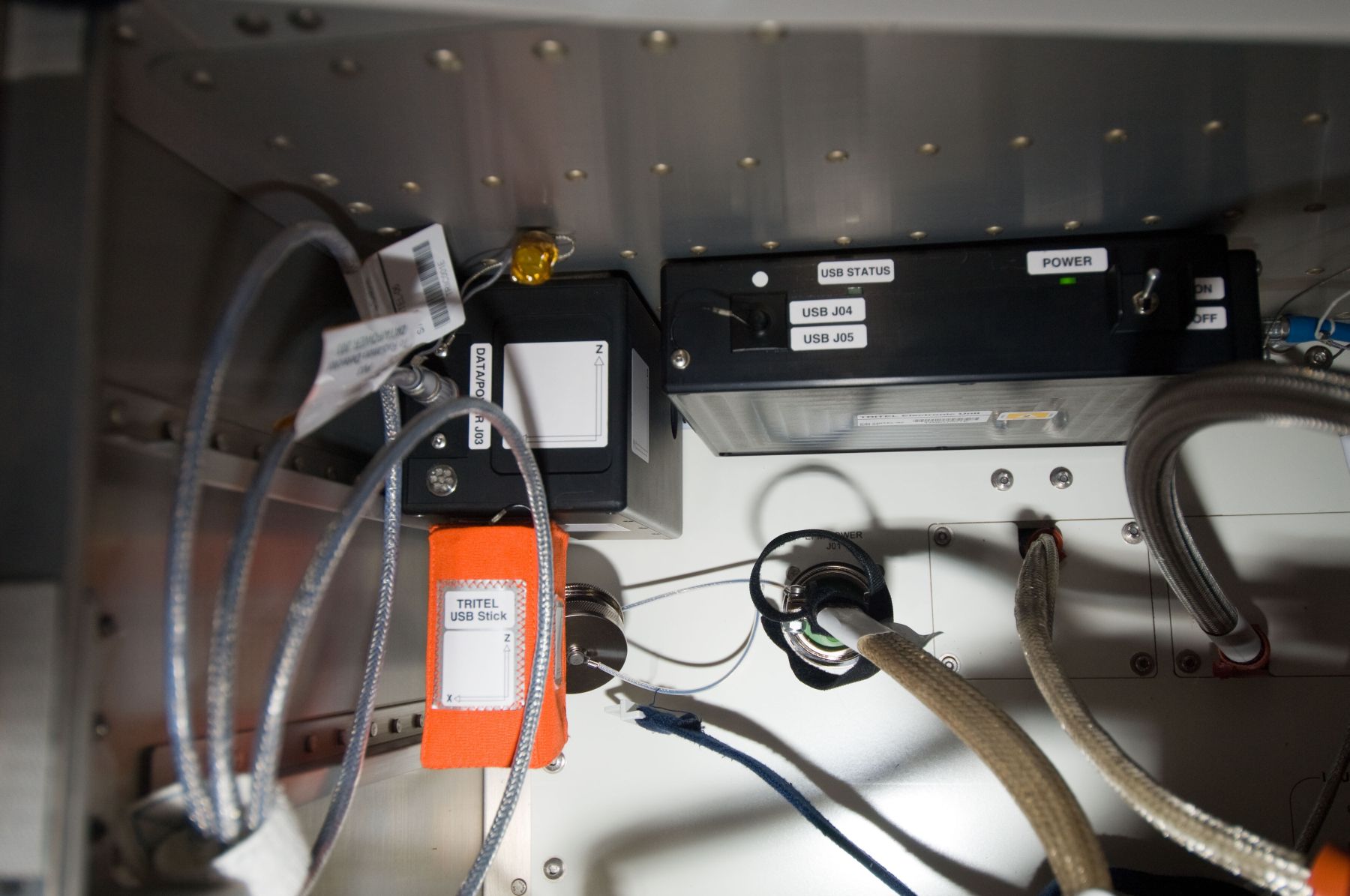TRITEL
detector telescope arrived to the International Space Station
Approximately 5 months after the successful delivery of the TRITEL 3D silicon detector telescope to the European Columbus Laboratory of the International Space Station (ISS) an advanced version of the instrument was sent to the Russian Zvezda module of the ISS by the historical (first six-hour-long) flight of Soyuz TMA-08M on March 28, 2013. The TRITEL experiment was developed in the Space Dosimetry Group of MTA Centre for Energy Research in cooperation with BL-Electronics Ltd. and with the Russian partner Institute of Biomedical Problems, Russian Academy of Sciences. The TRITEL-RS experiment includes also a passive detector package containing solid state nuclear track detectors oriented in three directions and thermoluminescent detectors.
The main objective of the TRITEL instrument is to measure not only the absorbed dose, but also the linear energy transfer (LET) spectrum of the charged particles and their average quality factor in three mutually orthogonal directions in order to give an estimation of the equivalent dose, too.
Preliminary measurement results will be shown on the graphical display of TRITEL's Interface Unit and cosmonauts will register dose values regularly. The passive detector package as well as a pendrive containing raw measurement data will be transported back to Earth every 6 months.
Detector unit (top left)
Interface unit (bottom left)
The earlier version (TRITEL-SAFE) in the space aboard the Columbus module of the ISS (right)
